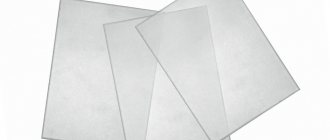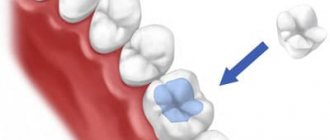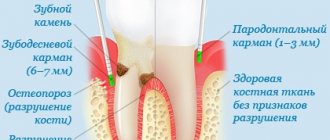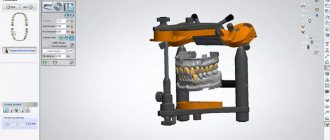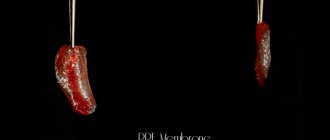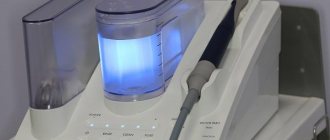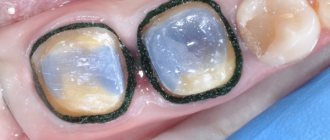Composition and properties of PCC
The product consists of two components: powder and liquid.
The powder is converted zinc oxide with the addition of magnesium oxide. The liquid consists of a 37% water-based solution of polyacrylic acid.
Properties:
- ensuring a chemical relationship with tooth tissue;
- the formation of a strong bond with the metal, especially if it has been sandblasted;
- carboxylate has low toxicity to the pulp.
The finished working solution has the appearance of a paste-like consistency, with a smooth and shiny surface.
Carboxylate cements have their advantages and disadvantages:
| Advantages | Flaws |
| According to biological characteristics, they are highly compatible with dental tissues | Has the property of dissolving in the mouth over time |
| They do not allow acids to pass through, which are formed during the hardening of the filling. | |
| Are not an irritant to the pulp | Insufficient strength |
| Good adhesion to hard tooth surfaces |
In what cases is it necessary to fix dental crowns?
Attaching dental crowns allows you to connect the structure to the dental tissue. How long the structure will last depends on this stage. High-quality installation of dentures provides relief from the negative impact of the external environment, one of the manifestations of which is caries. If the crown falls out, it can be glued back.
Causes of crown loss
The main cause of crown loss is most often sticky or hard food. But also some patients develop secondary dental caries . This can happen with improper treatment and installation of a denture, when the hard remaining tissues under the denture are poorly cleaned and provoke the development of bacteria and microbes.
Bad habits such as cracking nuts, chewing a pencil or pen can lead to crown loss.
Very rarely, some patients may experience an allergic reaction and incompatibility of materials with dental tissues.
Method of application
The material is used for fixing different types of inlays and crowns, small-sized prostheses - bridges, and orthodontic devices. Used for filling children's teeth, as well as for temporary fillings.
To mix polycarboxylate cement mortar, use a clean piece of glass and a spatula.
Just before mixing, drop the required amount of liquid base from a bottle with a dropper onto the glass. To prevent the liquid from evaporating, the bottle must be closed immediately. Then add the powder and quickly mix for about 30 seconds.
The powder must be added in portions, first dividing into two equal parts. First, one share is combined and mixed with the liquid for 15 seconds. Then add the second one and continue mixing until smooth (in the same time as the first).
The best ratio of powder to liquid is considered to be 0.4:0.2, respectively.
If the temperature in the room exceeds 22°C, then the dose of powder should be reduced or a little more liquid component should be added.
From the start of mixing, the prepared composition must be used within 1-2 minutes. An indicator can be the glossy and shiny surface of the prepared pasta.
The cement hardening time is 5-10 minutes. With more liquid, curing takes longer.
The rate of hardening depends on:
- correctly selected proportion of powder to liquid;
- reaction susceptibility of zinc oxide;
- particle size and the presence of additional impurities;
- polyacrylic acid content.
After 10-12 hours, the material completely hardens. Food can be taken no earlier than 4 hours after mouth treatment.
Filling tooth canals on video:
Types of fixation
Fixation of dental crowns is carried out by a dentist using temporary or permanent cement (more details in the article: how is dental cement prepared?). Typically, dentists install a temporary restoration for a certain period of time in order to deal with specific dental pathologies before installing a permanent crown. For example, if a patient requires treatment for pulpitis or periodontitis, the dental canal must be accessible to the doctor. This can only be achieved with a temporary crown.
Temporary
Temporary installation of dentures allows the doctor to observe the reaction of the tooth before installing the denture permanently. In dental practice, plastic crowns are most often used for this, but acrylic and its derivatives are also in demand. The advantages of temporary fastening include:
- relatively cheap cost;
- maintaining the bite due to the fact that the tooth does not move to the sides;
- relief from pain in the case of nerve remnants;
- quick adaptation to the new tooth;
- maintaining correct diction;
- maintaining a pleasant aesthetic appearance.
Despite all the above advantages, temporary crowns have significant disadvantages:
- Composition and structure. The porous structure of the plastic allows pathogenic microorganisms to penetrate to the tooth stump, which sooner or later can provoke an inflammatory process.
- Material. Temporary cement quickly dissolves under the influence of saliva.
- Manufacturing. The methods for making temporary dentures are very primitive, as a result of which dentists insist on their fragility.
Dentists warn their patients about the high risk of temporary crowns falling out. To avoid this, doctors recommend eliminating sticky and hard foods, and also insist on chewing food on the side of the jaw that does not have a crown.
Constant
After a month of wearing a temporary crown, if the patient does not complain about any inconvenience, the doctor decides to replace it with a permanent one.
Installing a permanent denture can be compared to the work of a craftsman - the dentist must prepare the tooth for the crown as carefully and efficiently as possible. No matter how ideal the dentist’s work is, permanent crowns also tend to become loose and fall out. Possible reasons could be:
- the presence of secondary caries, which leads to tooth loosening;
- the development of diseases such as diabetes mellitus or any other somatic pathologies;
- incompatibility of tissues with materials for fixation;
- failure to comply with doctor's recommendations regarding prohibited foods;
- mechanical damage - impact, increased chewing.
Popular brands and manufacturers
The brands and manufacturers presented in the table have proven themselves well:
| Name | Manufacturer |
| "Belokor" | VladMiVa |
| "Belokor" | Rainbow-R |
| "Carbofaine" | Spofa Dental |
| Polycarboxylate cement | Stoma |
| Polycarboxylate cement | Medpolymer |
| Polycarboxylate cement with potassium nitrate | Medpolymer |
| Adhesor Carbofine | Spofa Dental |
| Aqualox | Voko |
| Carboxylatzement Bayer | Bayer |
| Cimex | DentAmerica |
| Durelon Powder | ESPE |
| PolyCarb | PSP Dental |
| PR Scell Polycarboxylate | Pierre Holland |
| Selfast | Septodont |
| Carboxylatzement Bayer | Bayer |
Possibilities of dental cement
Glue for crowns makes it possible to tightly attach the crown to the root socket and prevent it from falling out of the gums. You can buy such material in specialized stores or at a pharmacy. Each dentist prefers to use a mass familiar to him, from a certain manufacturer. It must be said that if you buy inexpensive material, you can’t hope for a positive result.
Crown adhesive allows you to:
- firmly attach the crown to the tooth socket and thereby hold it during chewing movements;
- prevent the process of tooth decay from the inside;
- create a durable protective coating that will prevent bacteria from entering the tooth.
Consequences of using cement and glue for attaching prostheses
Independent use of cement or glue to fix dentures cannot be considered absolutely safe. Their use can provoke poisoning of the body due to an excess of zinc. Everyone also knows that zinc causes copper deficiency, which leads to neurological pathologies. The only reliable way to protect yourself from these side effects is to promptly contact a dentist who uses high-quality and professional adhesives for attaching dentures.
- https://AzbukaZubov.com/protez/koronki/klej-dlya-zubnyh-koronok.html
- https://stoma.guru/protezirovanie-i-implantaciya/koronki/mozhno-li-kupit-v-apteke-zubnoy-cement-dlya-koronok.html
- https://www.operabelno.ru/vidy-stomatologicheskix-cementov-dlya-fiksacii-zubnyx-protezov-koronok/
- https://www.dentalpiter.ru/protezirovanie-zubov/cement-dlya-koronok-vidy-i-osobennosti-primeneniya
- https://www.vash-dentist.ru/protezirovanie/nesemnyie-p/stekloionomernogo-tsementa-dlya-fiksatsii-koronok.html
Glass ionomer materials "Glassin"
- Home →
- News and articles on dentistry →
- Therapy →
- Glass ionomer materials "Glassin"
AD Wilson and BE Kent developed a new filling material, ASPA aluminosilicate polyacrylic cement, in 1971. This and similar materials are called glass ionomer cements. The material was released in 1973 in the USA by De Trey.
They were considered a new generation of zinc-polycarboxylate cements, produced since the late 60s. Zinc-polycarboxylate cements evolved from zinc-phosphate cements due to the discovery of the possibility of replacing phosphoric acid with polyacrylic acid.
Glass ionomer cements have been proposed as materials that can replace silicate cements, which have been used in practical dentistry for about 80 years and are gradually being replaced by polymer-based composites.
It should be noted that the name glass polyalkenate cements is more correct and meets the requirements of the international standard (ISO).
For the restoration of permanent teeth, composites are certainly better. However, composites cannot solve all the problems of treating permanent “immature” teeth. The anatomy and physiology of the tissues of temporary and permanent teeth in children differs from similar indicators in adults
Caries that occurs during the period of incomplete mineralization often has an acute course; rapid rates of destruction of hard tissues are observed with a delay in protective mechanisms in the form of dentin sclerosis and the formation of replacement dentin.
To stabilize the process and improve the situation in the oral cavity, a material is required that can remineralize hard tooth tissues and reduce the risk of developing secondary caries.
Depending on the clinical application, glass ionomer cements (GIC) are divided into 3 types: fixing, restorative, restorative, lining cements.
Using cement for crowns at home
There is no need to despair if the prosthesis falls out, because you can temporarily glue it on yourself. Dental adhesive cement can be purchased at a pharmacy. It is worth saying that its composition is much different from professional cement used in dentistry. With these steps you can temporarily fix the crown until your next trip to the dentist.
Many people believe that by gluing a prosthesis at home, you can walk with it for a long time, but this is not so. The thing is that the dentist must first treat the tooth socket with special means and securely secure the crown. Only in this case can you count on the correctness and effectiveness of prosthetics.
The rules for using cement adhesive independently include the following points:
- Before the fallen crown is glued, it must be cleaned of old cement. To do this, use special dissolving liquids and a brush. Such cleansing preparations can be purchased in the form of tablets that dissolve in water.
- The washed prosthesis must be thoroughly rinsed under water and dried. If moisture remains on the crown, the bonding process will not be strong.
- Then you need to apply dental cement to the crown and put it in place. It is worth considering that the glue is applied in small dots.
- It is very important to place the crown accurately and evenly, and then clench your teeth tightly for a few minutes. This time will be enough for the prosthesis to firmly adhere to the tooth and fall into place.
- After such manipulations, you must refrain from drinking and eating for at least 30 minutes. If excess cement protrudes when pressing on the crown, it must be removed. It is worth saying that dental cement is non-toxic.
With proper dental care, this “home treatment” will last for a maximum of 2-3 weeks . To prevent the crown from falling off, you must not chew food on the problem side and brush your teeth very carefully.
Recommendations from experts on the selection and use of dental glue
In case of severe tooth decay, when treatment is simply impossible, crowns are used. This fixed prosthesis accurately imitates a lost tooth and performs all its functions .
Before installing a crown, the damaged tooth is ground down and then special dental cement is applied. This material allows you to firmly attach the crown and not move during the chewing process. This material, after hardening, becomes very durable.
A prosthesis fixed with such a mass can serve a person for more than 10 years without causing any inconvenience to the person - an unpleasant smell or taste.
Even if you buy the strongest adhesive, this does not guarantee that the cement will withstand even the most intense and severe loads . Very often, a crown can fall off at the most inopportune moment, and then you need to immediately contact your dentist. When this is not possible, you can fix the problem at home.
Types of dental cements for fixation of fixed dentures and crowns - classification
Today, the dental clinic market offers a lot of different compositions that are used to permanently secure permanent crowns and dentures in the patient’s oral cavity.
There are four main types of cement identified through experiments conducted by scientists and specialists over the past ten years. Their classification depends on the type of binding component present in the matrix and the specific indications for use.
Zinc phosphate dental cement for fixation of crowns and dentures
It is the oldest of the dental cement compositions that dentists now practice.
Mix immediately, right before use. It contains 65-70% powder, represented by magnesium or zinc oxides, and the liquid part is an aqueous solution of phosphoric acid.
Application
- Installation of single crowns and bridges on 3-4 teeth in patients without hypersensitivity.
- Fixation of pin structures on a well-preserved root protruding above the gum.
- Prosthetic bridges for more than 4 teeth.
Polycarboxylate cement for crowns
The powder combines zinc oxide and tin fluoride. The liquid part contains water and polyacrylic acid.
- lowest adhesiveness and strength;
- excellent biocompatibility, the likelihood of allergies or irritation is almost zero;
- a thin layer of composition is required;
- serves as an additional prevention of caries.
Polycarboxylate cement for fixing crowns is ideal for fixing single crowns with increased tooth sensitivity. For all other clinical situations, there are better options.
Glass ionomer cement for fixation of crowns and fixed dentures
The liquid part of glass ionomer cement is represented by polyacrylic acid, and the powder part is not similar to those described in this material.
Aluminosilicate glass contains a high fluorine content.
Arde Kwik Tsem
The German drug Arde Quick Cem is a dual-curing microhybrid cement intended for fixation of dental structures in the form of veneers (both light-conducting and non-light-conducting), intracanal pins, bridges, crowns, etc.
Mixing cement can be done either automatically (in cannulas and syringes) or manually. The main advantages of Arde Quick Cem:
- increased fluidity (with the help of intraoral attachments, good filling of small posterior and anterior carious cavities that are difficult to access is ensured);
- high radiopacity;
- possibility of automatic mixing without the formation of air bubbles;
- relatively low price.
Arde Fix
Chemically cured German (Ardenia) glass ionomer cement is designed primarily for fixation of various dental structures - bridges, crowns, intracanal pins, onlays, orthodontic rings.
Arde Fix provides:
- high adhesion to dental tissues and orthodontic structures;
- guaranteed (chemical) polymerization, which ensures reliable fixation of internal structures, in particular intra-channel pins;
- non-oxidation and practical insolubility in oral fluids.
